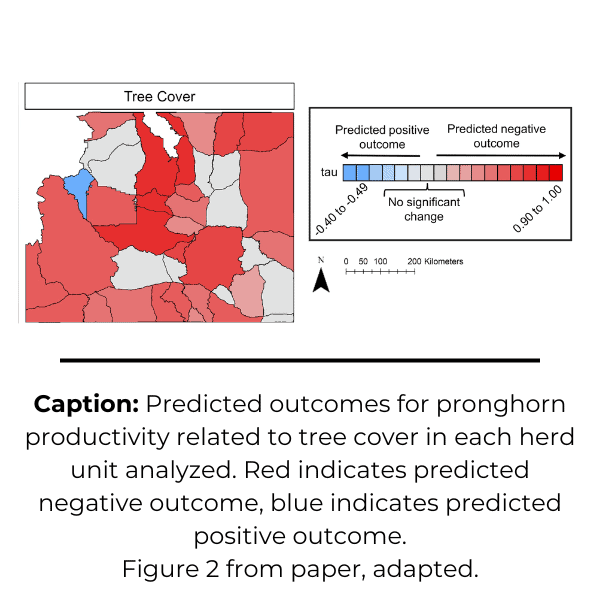
Publication Alert
A geographic strategy for cross-jurisdictional, proactive management of invasive annual grasses in Oregon
A new “Defend the Core” strategy for addressing invasive annual grasses is emerging in Oregon and it parallels other efforts across the West.

Defend the Core: Maintaining intact rangelands by reducing vulnerability to invasive annual grasses
February 22, 2022
“Defend the Core” — Fighting back against rangeland invaders in sagebrush country
February 24, 2022
Oregon partners outline blueprint for proactive management of invasive annual grasses
Big-picture spatial technology allows landscape-scale management of rangeland threats
In southeastern Oregon, nearly 18 million acres of sagebrush steppe provide habitat for wildlife and sustain ranching economies in a mix of federal, tribal, state, and private ownership. Like the rest the Great Basin, this incredible natural resource is threatened by invasive annual grasses like cheatgrass, medusahead, and ventenata. An estimated 4.1 million acres of Oregon’s sagebrush steppe are heavily impacted by these invaders and an additional 7.5 million acres are at risk.
A paper in the journal Rangelands, led by Megan Creutzburg (Institute for Natural Resources/Oregon State University) with coauthors from The Nature Conservancy, Bureau of Land Management, NRCS-Working Lands for Wildlife, US Fish and Wildlife Service, and University of Montana, details a proactive strategy that crosses Oregon’s land ownership boundaries to manage this threat. Developed by the SageCon Partnership – a collaborative group coordinating actions to reduce threats to sagebrush and sage grouse in Oregon – the authors detail how the state leveraged spatial data to produce a new geographic strategy in support of its new Invasives Initiative that provides a spatially explicit framework for proactive management of invasive annual grasses: Defend the Core, Grow the Core, Mitigate Impacts. The effort builds upon similar work taking off in other western states, such as the Idaho Cheatgrass Challenge, and shows how the approach can be customized by state and local partners.
Past invasive annual grass management often focused on treating areas heavily impacted by these invaders. This reactive, emergency response hasn’t produced long-term results at the scale needed to adequately address this challenge. SageCon’s approach taps into the adage, “An ounce of prevention is worth a pound of cure,” and focuses partners on proactive, preventative management in still-intact sagebrush landscapes that are not heavily impacted by invasive annuals – an approach that is more likely to be effective in the long run.
The geographic strategy leveraged remote-sensing rangeland data from the Rangeland Analysis Platform (RAP) and NRCS soil survey data to identify core areas and account for biotic and abiotic factors that influence how a specific landscape are likely to respond to on-the-ground treatments.
Authors used this data to map landscape conditions across large and complex geographical scales, allowing them to identify relatively intact rangeland “cores” with healthy perennial plant cover. These cores are priorities for preventative management to protect them against annual grass invasions. Heavily invaded areas were also identified and mapped, highlighting where practitioners can work with communities to build adaptive capacity that mitigates annual grass-related impacts like frequent wildfire. Finally, transitioning regions between cores and areas of heavy infestation will help expand core areas and grow the amount of healthy and resilient rangelands.
The maps, supporting materials, technical documentation, and other related resources developed by SageCon cover the broad patchwork of land ownership in Oregon and further the Initiative’s primary goal of coordinating efforts across boundaries to achieve desired landscape-scale outcomes.
Importantly, the strategy itself does not provide answers or make difficult choices regarding specific management actions. Instead, it provides a conceptual framework for on-the-ground practitioners, as well as a unified vision for conservation investments. The strategy relies on local groups working together across boundaries to:
- Defend cores through reducing the risk of annual grass invasion,
- Grow cores by bolstering perennial plant communities and other strategies that improve the resilience of relatively intact landscapes adjacent to cores, and
- Mitigate impacts by proactively managing for annual grass-generated crises like wildfire, lost grazing productivity, and collapsing wildlife habitat.
Collaborative efforts like Oregon’s SageCon Invasives Initiative use the “Defend the Core” approach to emphasize opportunities for proactive management that keep healthy rangelands intact. This same approach is a central tenant outlined in the USDA-Natural Resources Conservation Service’s Framework for Conservation Action in the Sagebrush Biome, which focuses on addressing the top threats facing sagebrush rangeland, including invasive annual grasses.
The early view of this article is now available online as part of a special issue of Rangelands to be released later this spring. Titled “Changing with the range: Striving for ecosystem resilience in the age of invasive annual grasses” this issue is sponsored by the High Desert Partnership.
A geographic strategy for cross-jurisdictional, proactive management of invasive annual grasses in Oregon
Abstract: Invasive annual grasses pose a widespread threat to western rangelands, and a strategic and proactive approach is needed to tackle this problem. Oregon partners used new spatial data to develop a geographic strategy for the management of invasive annual grasses at landscape scales across jurisdictional boundaries. The geographic strategy considers annual and perennial herbaceous cover along with site resilience and resistance in categorizing areas into intact core, transitioning, and degraded areas. The geographic strategy provides 1) a conceptual framework for proactive management, building upon similar work recently begun across the Great Basin, and 2) multi-scale spatial products for both policymakers and local managers to identify strategic areas for investment of limited resources. These spatial products can be used by Oregon partners to generate a shared vision of success, facilitate proactive management to “defend and grow the core,” and collaboratively develop meaningful and realistic goals and strategies for the management of annual grasses at landscape scales.
Citation: Megan K. Creutzburg, Andrew C. Olsen, Molly A. Anthony, Jeremy D. Maestas, Jacqueline B. Cupples, Nicholas R. Vora, Brady W. Allred, A geographic strategy for cross-jurisdictional, proactive management of invasive annual grasses in Oregon, Rangelands, 2022, ISSN 0190-0528.
Permanent URL: https://doi.org/10.1016/j.rala.2021.12.007







